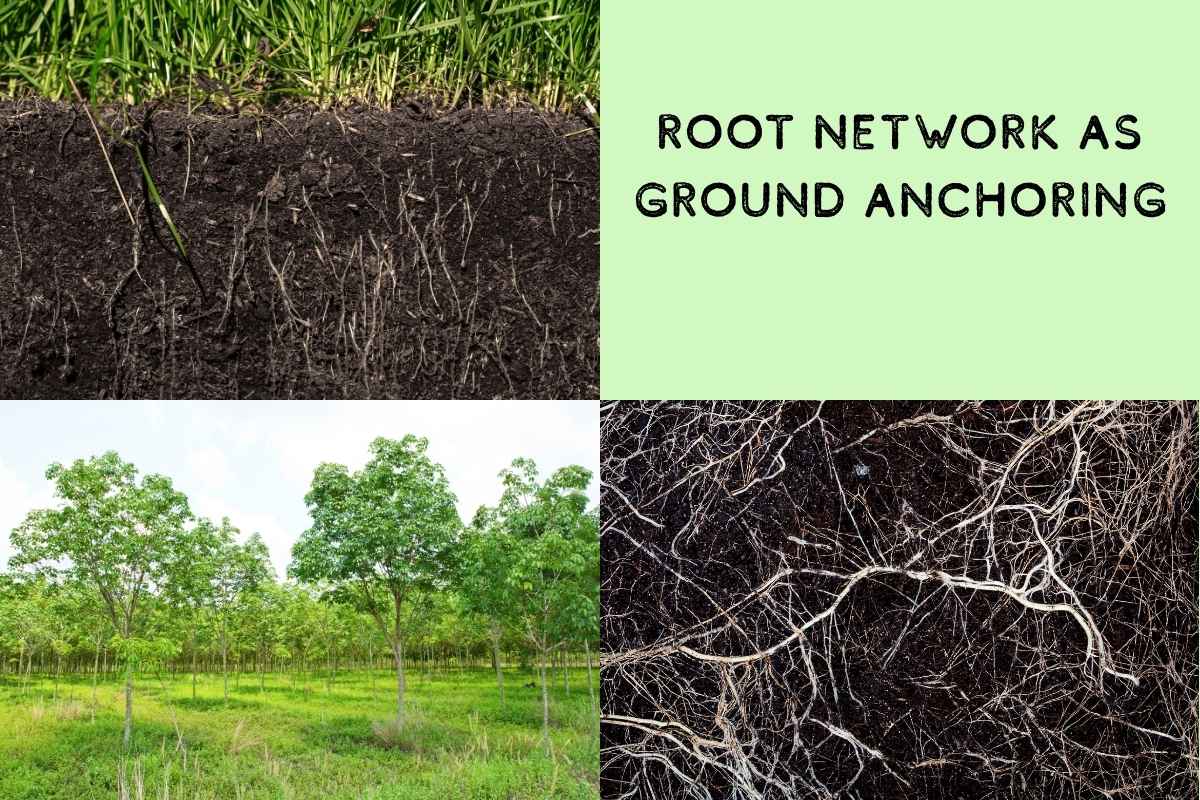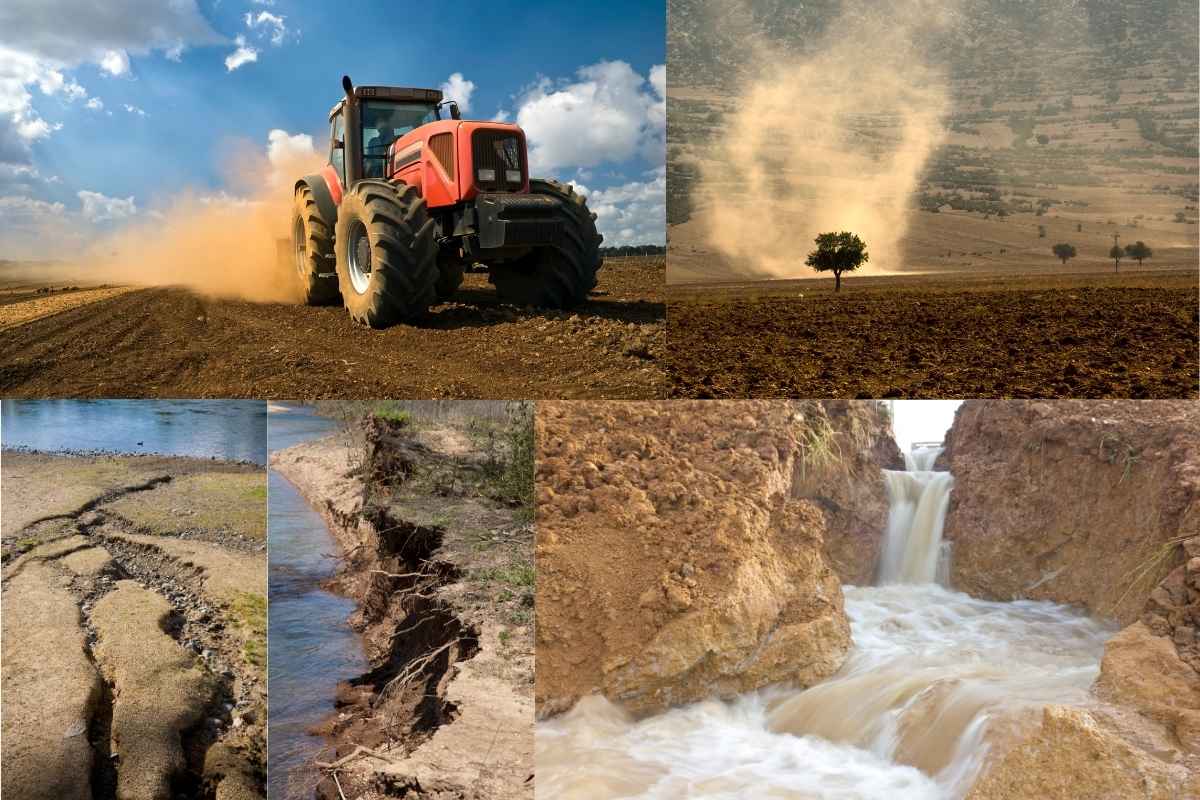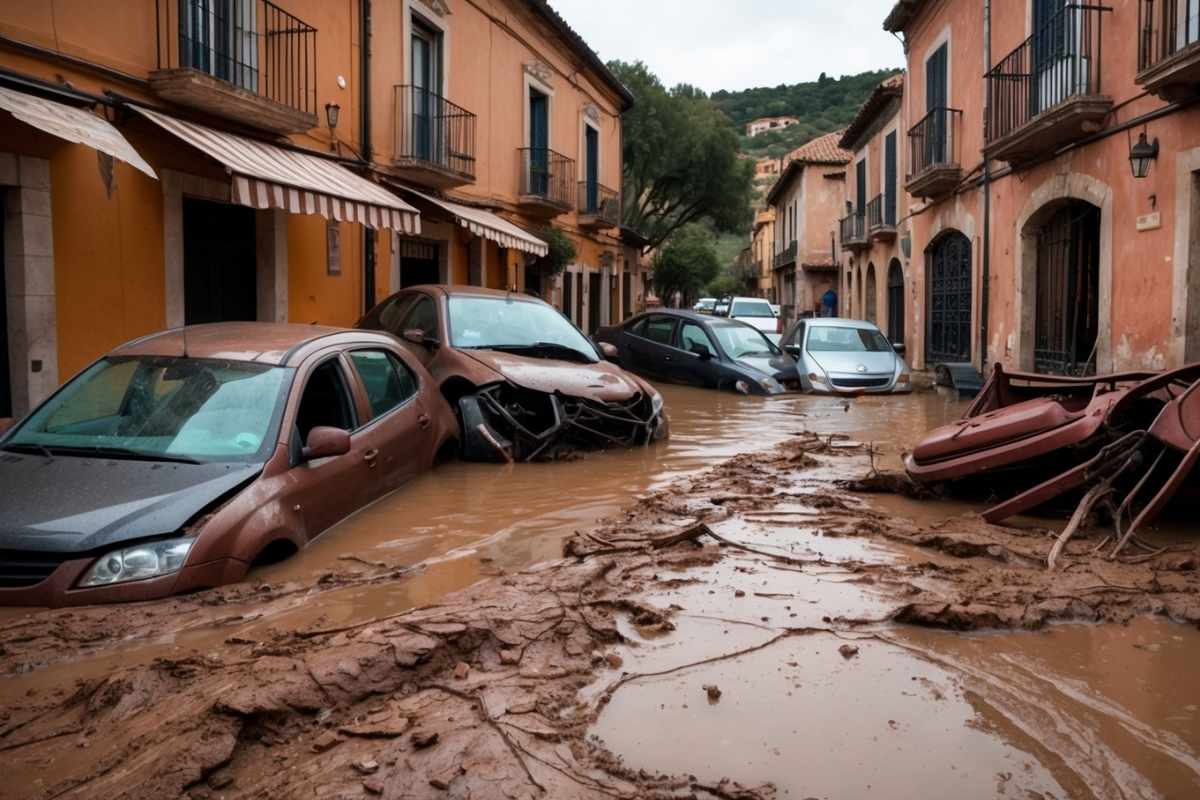What are the consequences and who is affected?
What is erosion?
Erosion means that soil, sand, and even stones are removed and transported to another place by water, wind, or ice.
Soil erosion by wind:
Soil erosion by wind refers to the removal, transport, and deposition of soil material by the force of the wind. Especially fine dust particles can even cross the Atlantic: every year, about 182 million tons of Saharan dust are transported to South America and the Caribbean – a distance of about 2,500 to 4,000 kilometers.
In exceptional cases, the fine particles can travel even further and remain in the atmosphere for several months. Wind erosion is favored by high wind speeds, dry and fine-grained soils, and little or no ground cover.
Soil erosion by water:
Soil erosion by water is the process in which soil particles are detached, transported, and redeposited by the action of rain and runoff. First, raindrops hitting the ground destroy the soil structure (the so-called splash effect), loosening fine particles. If the water can no longer seep into the ground, it flows off the surface and carries the loosened soil with it. The consequences are the loss of the fertile topsoil, crusting, rill or gully erosion, and damage to water bodies and infrastructure.
This can happen slowly, as with a river gradually “nibbling” away at its bank over years, or suddenly, for example during a flood.
How does erosion occur?
Erosion happens when the soil is no longer well protected – for example, because plants and their deep roots are missing. Roots hold the soil together like a natural net. They penetrate the soil and bind the soil particles together, stabilizing the ground and promoting water absorption. Agriculture, drought, or heat can break up and destroy this natural “soil anchoring.”
The Example of Spain: Erosion and Catastrophic Consequences
At the end of October 2024, Spain experienced one of the worst flood disasters in its history. The most affected regions were Valencia, Andalusia, and Murcia. In just a few hours, up to 422 liters of rain per square meter fell in some places – as much as usually falls in an entire year!
What were the consequences?
Over 230 people died, many were injured or missing.
More than 60,000 homes and 115,000 cars were destroyed.
Roads, bridges, and fields were devastated by floods and mudslides.
In many places, people had to be rescued from rooftops by helicopters.
Why was erosion so severe?
In many regions of Spain, the soil is already very susceptible to erosion due to drought, intensive agriculture, and lack of plants.
Because of the drought, the soil is often as hard as concrete and cannot absorb water. When a lot of rain falls suddenly, the water runs off the surface and carries the soil with it – this is erosion in action!
The floods washed not only soil but also mud, stones, and debris through streets and fields. What remained were destroyed fields, muddy houses, and unusable land.
To repair this, these areas must be renaturalized again!

|
Why??? – It’s simple!!! The water can no longer seep in – because the soil has become a closed “concrete layer”! |
The Gradual Consequences of Erosion in Spain:
Soil loss: Fertile soil is washed or blown away, fields become unusable, harvests fail.
Desertification: As more fertile soil is lost, deserts can spread. Spain loses an average of 1.4 million tons of soil per day due to erosion, promoting the spread of desert-like areas.
Damage to infrastructure: Roads, bridges, and houses are undermined and can collapse.
More floods: Without protective plants and healthy soil, water can no longer seep in, leading to even more frequent flooding.

What Can Be Done?
Protect soil: Preserve plants, hedges, and forests so roots hold the soil together.
Don’t leave soil bare: After harvest, plant cover crops instead of leaving fields empty.
Less intensive agriculture: Plow less, build up more humus so the soil can store water.
Direct water runoff: Create ditches, dams, and terraces so water doesn’t wash everything away at once.
Summary:
Erosion is a huge problem worldwide – especially when heavy rainfall suddenly occurs after a long drought. The soil is then washed away, fields are destroyed and major damage occurs. The example of Spain shows how important it is to protect the soil so that such disasters do not become even worse. Worldwide, more than 30% of agricultural land has already been devastated and is a victim of erosion.
Important:
Spain is just one example of many countries that have this problem. All over the world, healthy soil is the best protection against erosion, flooding and desertification!
It is high time to stop this. Our “Guardian of the Earth Program”, which will soon go online, will show how this can be done and how everyone can contribute. Stay tuned. You can find all the information here.
Author: Francesco del Orbe



